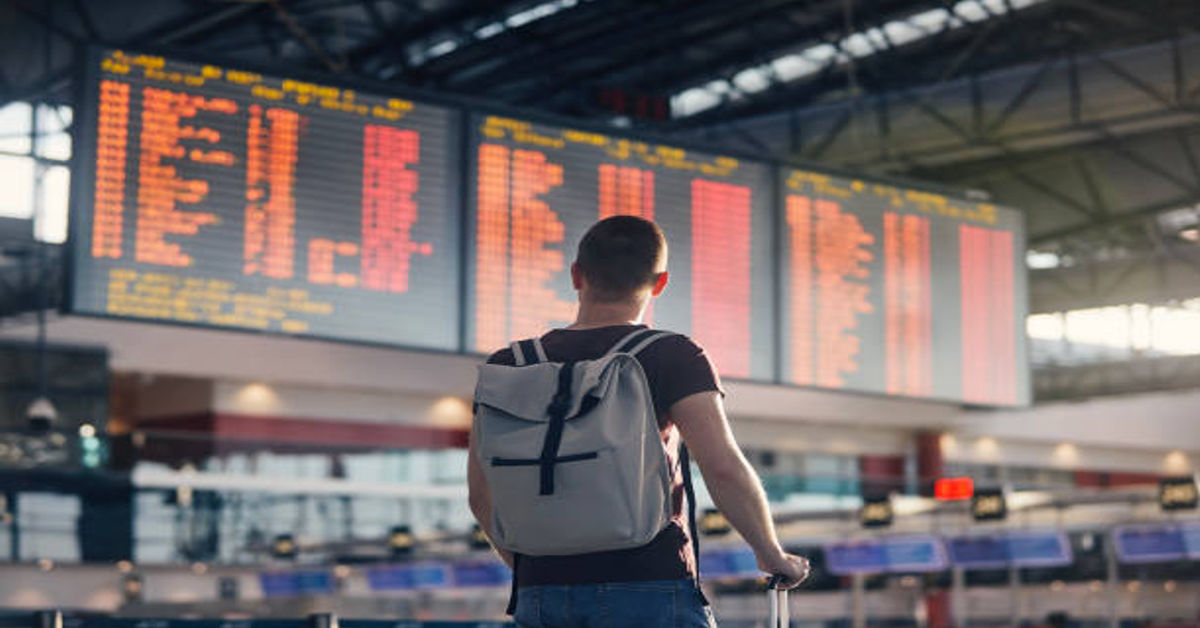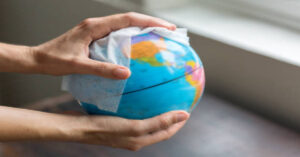Solo Travel Tips: is an increasingly popular way to explore the world while gaining independence, confidence, and life-changing experiences. Unlike group travel or guided tours, solo travel places the responsibility for planning, safety, and enjoyment entirely on the traveler, which can be both liberating and challenging. For those embarking on their first solo adventure, preparation, awareness, and strategic decision-making are critical. Solo travel is not just a logistical endeavor—it is also a journey of self-discovery, cultural immersion, and personal growth. Understanding the nuances of solo travel—from destination selection and budgeting to safety strategies and mental preparedness—can make the experience deeply rewarding. In this guide, we provide in-depth, practical, and unique tips for solo travelers at all levels of experience, combining considerations of personal safety, financial planning, social interactions, transportation, and overall travel mindset.
The first key element of solo travel is the mindset. Unlike traveling with companions, solo travel requires embracing solitude, self-reliance, and flexibility. Solo travelers must be comfortable making decisions independently, navigating unexpected challenges, and embracing moments of loneliness or uncertainty. This independence cultivates resilience, adaptability, and heightened awareness of one’s surroundings. Many solo travelers report that their most memorable experiences emerge when they venture off the beaten path, engage deeply with local communities, or confront personal limitations, such as overcoming language barriers or unfamiliar cultural norms. By preparing mentally, a traveler sets the foundation for both safe and enriching experiences.
Choosing the Right Destination for Solo Travel
Destination selection is one of the most important decisions for solo travelers. Factors such as safety, accessibility, language, transportation infrastructure, cultural norms, and cost can greatly influence the overall experience. For first-time solo travelers, destinations that are safe, culturally welcoming, and easy to navigate are ideal. Countries with robust public transportation, tourist-friendly infrastructure, and low crime rates tend to provide a less stressful experience. Additionally, destinations where English or the traveler’s primary language is commonly spoken can reduce barriers to communication and increase confidence in solo exploration.
More experienced travelers may seek destinations that are less traveled or more adventurous, such as remote regions, mountainous areas, or culturally distinct communities. Regardless of experience level, solo travelers should research local customs, safety advisories, and social norms to ensure they respect local culture and avoid avoidable risks. Online travel communities, guidebooks, and social media groups are invaluable for gathering insights from other solo travelers about what works best in specific regions.
Table: Factors to Consider When Choosing a Solo Travel Destination
| Factor | Consideration | Example |
|---|---|---|
| Safety | Crime rates, political stability | Japan, New Zealand, Canada |
| Accessibility | Public transport, airport access | Germany, Singapore, Thailand |
| Cost | Accommodation, food, activities | Vietnam, Portugal, Mexico |
| Language | Local communication ease | Netherlands, Sweden, Malaysia |
| Cultural Acceptance | Solo traveler friendliness | Iceland, Costa Rica, Australia |
| Activities | Adventure, relaxation, social opportunities | Peru for trekking, Bali for yoga |
By evaluating destinations across these categories, solo travelers can select a location that aligns with their comfort level, interests, and personal goals.
Planning and Budgeting for Solo Travel
Financial planning is a critical component of successful solo travel. Unlike group travel, solo travelers cannot split costs for accommodation, transportation, or guided experiences. Therefore, careful budgeting helps avoid stress during the trip. Budgeting involves estimating costs for transportation, accommodation, food, activities, insurance, and emergency funds. It is also important to factor in flexibility for spontaneous opportunities or unexpected expenses.
One effective strategy for solo travelers is to prioritize cost-effective options without compromising safety or experience. Hostels, shared accommodations, or homestays provide opportunities to meet other travelers and reduce lodging costs. Cooking meals in shared kitchens, using public transportation, and booking tours or activities in advance can also help manage expenses. For digital nomads or longer-term travelers, setting a weekly or monthly budget and tracking spending using apps can prevent financial strain.
Travel insurance is another essential consideration. Solo travelers are more vulnerable to unexpected medical emergencies, theft, or travel disruptions, making comprehensive insurance a necessity. Insurance should cover health, accident, trip cancellations, and lost belongings, and policies should be reviewed carefully before purchase.
Table: Typical Solo Travel Budget Allocation
| Expense Category | Percentage of Budget | Notes |
|---|---|---|
| Accommodation | 30–40% | Hostels, hotels, rentals |
| Food | 20–25% | Street food, restaurants, groceries |
| Transportation | 15–20% | Flights, trains, buses, taxis |
| Activities | 15–20% | Tours, adventure, cultural experiences |
| Insurance | 5–10% | Health and travel coverage |
| Miscellaneous | 5% | Souvenirs, unexpected costs |
Budgeting strategically ensures the solo traveler can focus on experiences rather than financial stress.
Packing Essentials for Solo Travelers
Packing efficiently is crucial for solo travelers who must carry, manage, and protect all their personal belongings independently. Overpacking can be cumbersome, while underpacking may lead to emergencies. Minimalist packing emphasizes versatility, practicality, and safety.
Essential items include weather-appropriate clothing, comfortable walking shoes, toiletries, a first-aid kit, power banks, and durable luggage. For international travel, travelers should carry travel documents, copies of important identification, and emergency contacts. Technology such as a smartphone, offline maps, and translation apps helps navigate unfamiliar locations. Additionally, lightweight security measures like anti-theft backpacks or travel locks can protect personal items in crowded areas.
Solo travelers should also prioritize multipurpose items. For example, clothing that can be layered for warmth, converted into different styles, or quickly washed is ideal. Small travel towels, reusable water bottles, portable chargers, and compact first-aid kits are practical inclusions that support independence and safety.
Safety Tips for Solo Travel
Safety is often the top concern for solo travelers, and it requires a proactive approach. Awareness of surroundings, cultural norms, and potential risks is essential. Choosing safe accommodations, avoiding poorly lit or isolated areas, and trusting personal instincts are key strategies. Solo travelers should also stay informed about local laws, emergency services, and healthcare facilities.
Digital tools can enhance safety. Mobile apps for navigation, emergency alerts, and travel communities help maintain situational awareness. Carrying a small amount of local cash and storing valuables discreetly prevents theft. Communication strategies, such as sharing itineraries with family or friends and checking in regularly, ensure a support system is in place during the journey.
Additionally, solo travelers should be cautious when meeting new people. Social engagement is important for enriching experiences and reducing loneliness, but trust should be earned gradually. Traveling during daylight hours, choosing public meeting spaces, and avoiding sharing sensitive personal information online are practical precautions.
Table: Solo Travel Safety Checklist
| Safety Measure | Description | Example |
|---|---|---|
| Accommodation Selection | Well-reviewed, central, secure | Hostel with 24/7 reception |
| Awareness | Monitor surroundings | Avoid dark alleys at night |
| Emergency Contacts | Local and personal contacts | Embassy, local police, family |
| Travel Documents | Copies stored separately | Passport, tickets, insurance |
| Communication | Regular check-ins | Video calls, messages |
| Meeting Strangers | Use caution | Public locations only |
| Health Precautions | Vaccines, medication | First-aid kit, local pharmacy info |
Following these safety practices allows solo travelers to explore confidently while minimizing risks.
Navigating Transportation During Solo Travel
Transportation logistics are critical for maximizing time and convenience. Solo travelers should research public transportation options, including buses, trains, and ride-hailing services. Public transit is often economical and provides opportunities to interact with locals. However, in unfamiliar cities, understanding schedules, routes, and ticket systems is essential.
For longer distances, domestic flights or trains may be preferable, particularly in large countries where ground travel is time-consuming. Car rentals can offer flexibility in certain destinations, but solo drivers should understand local traffic laws and parking conditions. Planning transportation in advance reduces stress and allows travelers to focus on experiences rather than logistics.
Biking or walking in urban areas is also a viable option for solo travelers, promoting physical activity, environmental sustainability, and close interaction with surroundings. Navigation apps, offline maps, and local guides provide added confidence when exploring new areas independently.
Socializing and Meeting People While Traveling Solo
Contrary to common perception, solo travel does not equate to loneliness. In fact, traveling alone encourages greater social interaction with locals and other travelers. Hostels, group tours, language classes, and community events offer structured opportunities to meet people. Social skills, cultural sensitivity, and open-mindedness are crucial for forming positive connections.
Online communities and travel platforms also facilitate networking. Many travelers use apps and forums to arrange meetups, exchange tips, or participate in guided experiences. Solo travelers often discover deeper cultural understanding when they engage with local residents, learn traditions, and participate in community activities.
It is important to maintain balance in social interactions. Solo travelers should be open to new connections but also preserve personal time for reflection, planning, and independent exploration. This balance enhances mental well-being and allows travelers to recharge.
Mental Preparation and Mindset for Solo Travel
Solo travel challenges mental and emotional resilience. Being comfortable with solitude, adapting to unexpected changes, and embracing uncertainty are essential skills. Mental preparation includes goal setting, expectation management, and developing coping strategies for stress.
Journaling, meditation, and mindfulness practices help solo travelers reflect on experiences and process emotions. Preparing for occasional loneliness or cultural discomfort ensures that challenges do not diminish the overall travel experience. Embracing curiosity, patience, and a flexible mindset transforms solo travel into an empowering journey.
Technology and Apps to Enhance Solo Travel
Modern solo travel is supported by technology. Apps for maps, language translation, accommodation booking, and local recommendations reduce stress and improve efficiency. Safety apps provide alerts, emergency contacts, and geolocation tracking. Travel planning apps consolidate itineraries, tickets, and reservations, allowing travelers to stay organized without overburdening memory or paper documents.
Digital tools also facilitate cultural engagement. Translation apps enable meaningful communication, while social networking platforms allow travelers to join events, find travel partners, or explore niche experiences. Technology enhances both the convenience and safety of solo travel when used strategically.
Sustainable Practices for Solo Travelers
Sustainable travel is increasingly important. Solo travelers can minimize environmental impact by using public transport, avoiding single-use plastics, supporting local businesses, and respecting natural habitats. Responsible tourism ensures that destinations remain accessible for future travelers and that local communities benefit from tourism revenue.
Ethical travel includes cultural sensitivity, respecting local traditions, and reducing interference with wildlife. By practicing mindfulness and sustainability, solo travelers enhance their experiences while contributing positively to the destinations they explore.
Table: Summary of Solo Travel Tips
| Category | Key Recommendations |
|---|---|
| Destination Selection | Prioritize safety, accessibility, cost, language |
| Budgeting | Plan expenses, insurance, allocate funds for emergencies |
| Packing | Minimalist approach, multipurpose items, tech essentials |
| Safety | Awareness, emergency contacts, secure accommodation |
| Transportation | Research public transit, plan routes, use offline maps |
| Socializing | Join hostels, tours, local events, online communities |
| Mental Preparation | Embrace solitude, mindfulness, flexible mindset |
| Technology | Maps, translation, safety apps, travel planning tools |
| Sustainability | Reduce environmental impact, support local communities |
Conclusion
Solo travel offers unparalleled opportunities for personal growth, cultural immersion, and independence. By carefully selecting destinations, budgeting, packing wisely, maintaining safety, and embracing a flexible mindset, travelers can create experiences that are both enriching and memorable. The challenges of traveling alone—from navigating unfamiliar environments to managing logistics—are balanced by the freedom to explore at one’s own pace and the chance to engage deeply with people and places. Incorporating strategic planning, modern technology, social engagement, and sustainable practices ensures that solo travel is not only enjoyable but also responsible and empowering. Each trip becomes a story of self-discovery, resilience, and adventure that shapes lifelong memories.
Frequently Asked Questions (FAQs)
1. What are the best destinations for solo travelers?
Safe, accessible, and culturally welcoming locations like Japan, New Zealand, Iceland, and Canada are ideal for solo travel.
2. How can I budget effectively for solo travel?
Estimate costs for accommodation, food, transport, insurance, and activities; prioritize cost-effective options and track spending.
3. How do solo travelers stay safe?
Choose secure accommodations, stay aware of surroundings, share itineraries, and use safety apps and emergency contacts.
4. How can I meet people while traveling alone?
Hostels, tours, community events, and online travel groups provide opportunities for social interaction and cultural engagement.
5. What mindset is essential for solo travel?
Flexibility, independence, adaptability, and comfort with solitude enable a rewarding and stress-free travel experience.









